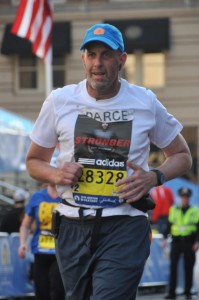Call 603.742.2007 | Toll-Free 800.429.5002 | Request an appointment | Pay My Bill
- Home
- Physicians
- Charles Blitzer, MD
- Christopher Couture, MD
- Mark Cullen, MD
- Peter Dirksmeier, MD
- Adam Fleit, MD
- Mark Geppert, MD
- Jennifer Hopp, MD
- Joseph Konopka, MD
- David Thut, MD
- Gavin Webb, MD
- Physician Assistants
- Buy Xanax Online
- Buy Valium Online
- Buy Tramadol Online
- Buy Soma Online
- Buy Priligy Online
- Buy Phentermine Online
- Buy Nolvadex Online
- Buy Ambien Online
- Buy Augmentin Online
- Buy Zovirax Online
- Buy Prednisone Online
- Buy Clomid Online
- Buy Accutane Online
- Buy Levitra Online
- Buy Generic Viagra
- Buy Generic Cialis
- Buy Generic Ativan
- Specialties
- Services
- Education
- Blog
- News
- Patient Gateway
Tom’s Boston Marathon Journey
I blew out my left knee badly in my late twenties – tore the MCL, ACL and cartilage meniscus playing softball. A year later, after rehabbing it, I had surgery to remove damaged cartilage. Over the next few decades, I continued to run, lift weights, play sports, ski – all with little discomfort. Then, finally, in August 2012, at age 52, the other shoe dropped. Pain and instability in the knee forced me to undergo additional surgery to repair further damage. At my age, and with my weight higher than it had ever been, my hope was only to walk without pain again. Dr. David Thut, of Seacoast Orthopedics & Sports Medicine and Wentworth-Douglass Hospital, performed the surgery, and was more optimistic than I was. He encouraged me to aggressively rehab it after the operation, advising that the knee would be stronger than I might think. I didn’t listen and my weight ballooned even further, up to over two hundred fifty pounds by April 15, 2013. That was the day the Boston Marathon was bombed.
Like many people all over New England and the country, I was angry. And again, like many, I knew someone personally who had been injured there. His name was Jeff Bauman, the nephew of my college roommate, and someone I’d known all his life. He lost both his legs below the knee, and suddenly the fact that, even though it might have been with some discomfort, I realized how lucky I was that I still had both my legs and could still run. I decided during the week following the tragedy that, despite my current physical situation, and even though I had never run a race longer than 5 miles, I was going to find a way to run the 2014 Boston Marathon.
I began by walking, then running, each day. Whatever pain was left in my knee subsided after a few weeks. Through diet and continuing to run longer and longer distances, the weight started to come off. By November, I had gotten my weight under two hundred, my knee felt great, but I was still without an official bib and no idea how I would get one. Then, the BAA announced they were opening up a few hundred special invitations for people who had been profoundly impacted by the bombing the year before, asking those interested to submit 500 word essays explaining why we wanted to run. Mine was accepted, and I was in. Although I had a few challenges during training – IT band, back, foot – the one part of my body I had fully expected to break down, my left knee, never bothered me a bit. Just as Dr. Thut had predicted, it was able to handle much more than I had thought.
Race day was a blur. By the time I reached the finish line over six hours after starting, I had pain in both quads, right knee, upper back, several toes – everywhere, it seemed, except my surgically repaired left knee. The joint which I had believed eighteen months earlier would prevent me from even jogging around the block ever again had held up for 26.2 miles without the slightest twinge of pain or discomfort.
It was an experience I’ll never forget – or probably repeat – and one that would not have been possible without the expertise of Dr. Thut and his right hand man, Nate, to whom I will be forever grateful.
-Tom D’Arcy
Boston Marathon Finisher, 2014

